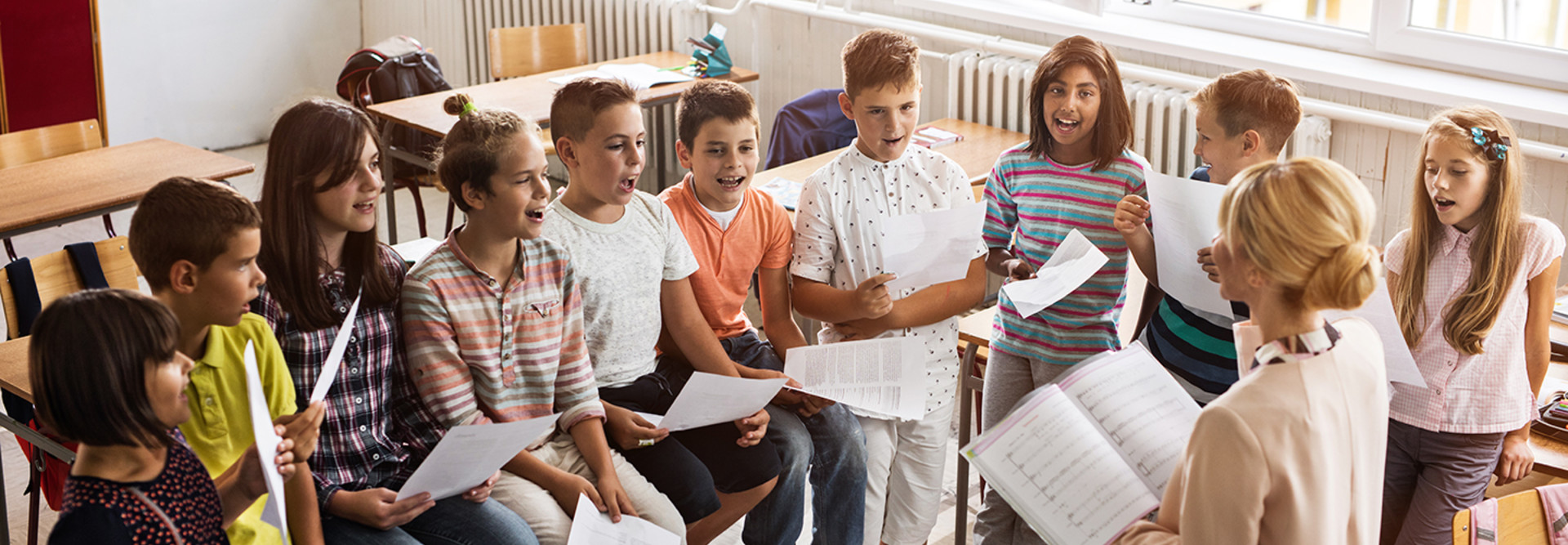Tech in the Music Classroom Creates Efficiencies, Improves Accessibility
For years, research has indicated that learning music can translate to other gains academically. The Special Music School at Kaufman Music Center in New York City was established with this research in mind. The school, which teaches music as its core subject, frequently ranks among the highest in standardized test scores, reports Education Dive.
As technology enters other parts of the school, it’s no surprise that tech integration also can benefit the 21st-century music classroom and lead to more positive outcomes for students.
Tech Boosts Musical Creativity and Accessibility
It’s not just makerspaces or innovative art classes that use 3D printers. Some performing arts schools are using the printers to create custom musical instruments that better fit students’ bodies and teach them about design, physics and resonance of instruments. Plus, the process lets students use technology in a way that contributes holistically to their learning experience.
“If you’re just throwing technology at them, it becomes this empty project,” says Georgette Yakman, the founder of STEAM Education, in an EdTech article. “Nobody wants to do something that’s going to go in a filing cabinet.”
Christopher Russell, a choir director from Minnesota, is a big proponent of finding meaningful ways to incorporate technology into classes. On his blog, Technology in Music Education, Russell regularly reviews apps and products. He cites YouTube — and schools that train music teachers agree — as a pretty big resource for music teachers. He explains on his blog how simple it is to slow a YouTube video to the speed of your choice for a play along or demonstration.
Thanks to technology, even the most amateur musicians can learn about composition. A variety of apps have a simple interface and can teach a lot about music while making use of typical classroom devices. Apps like Figure and Keezy use brightly colored blocks to help users compose, and Soundtrap has a drag-and-drop interface like some coding apps.
“Not only can the right apps help people make music wherever their smartphone goes, but it can also spark creativity in those with little-or-no musical talent,” reads a Gizmodo review of several apps.
Apps can also help teachers outside of the discipline more easily incorporate music into their classes. At Angola High School, English teacher Chantell Manahan took advantage of the school’s one-to-one Chromebooks to spice up her unit on poetry, a blog reports. Using Soundtrap, Manahan had her students turn their poems into songs.
Teachers Find Efficiencies and Improvements with Tech
For seasoned music teachers, technology is also quite useful. Just as any other teacher might use data to track student progress, music teachers can work with their students to set trackable goals and use data to identify patterns, writes string teaching specialist Richard Niezen on Smartmusic’s blog.
“Data can also be used to determine if problems follow any overall patterns, including common issues with pitch, rhythm, specific technical skills, or interpretation,” writes Niezen. “The director can then consider if these are the same issues that are being dealt with in rehearsal, and how that might affect their instructional goals moving forward through the rest of the school year.”
Former touring concert pianist Julian Toha felt the power of technology in teaching music was so promising that he developed an app called Oclef, which connects music teachers, students and parents to evaluate progress, open communication channels and create a digital repository of tips and feedback.
“I realized from all the teachers, students and parents I met on tour that there was a huge opportunity to help connect music education,” says Toha in an interview. “I decided to step down from my growing career as a pianist to figure out how I could bring together an entire industry by using technology to make it simple and powerful.”









